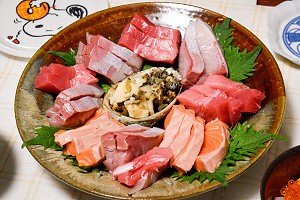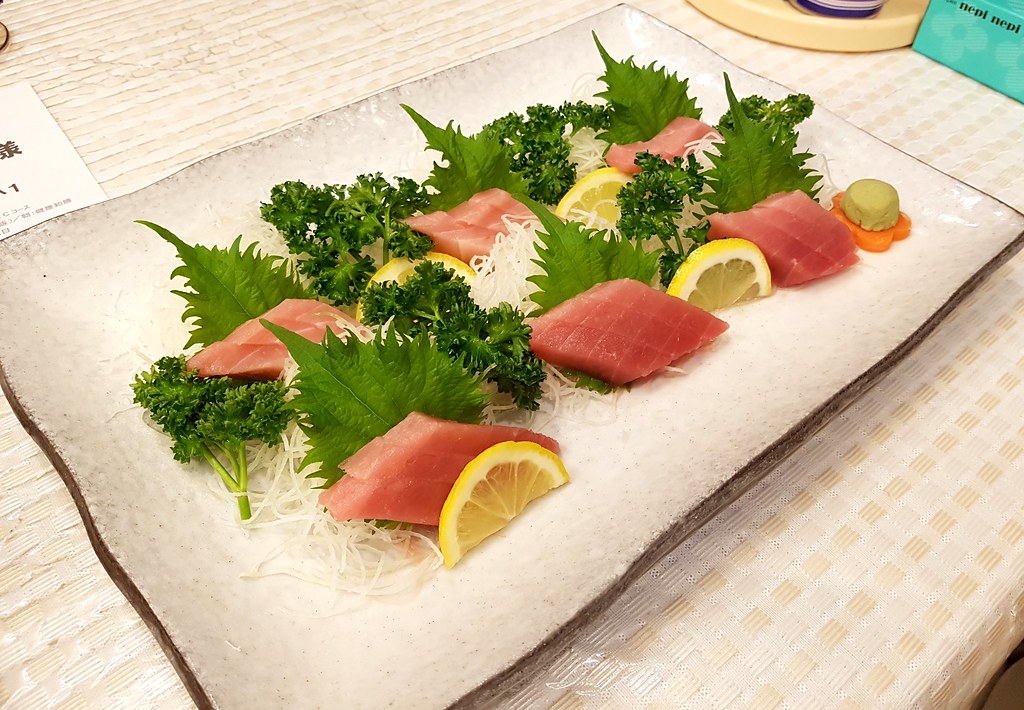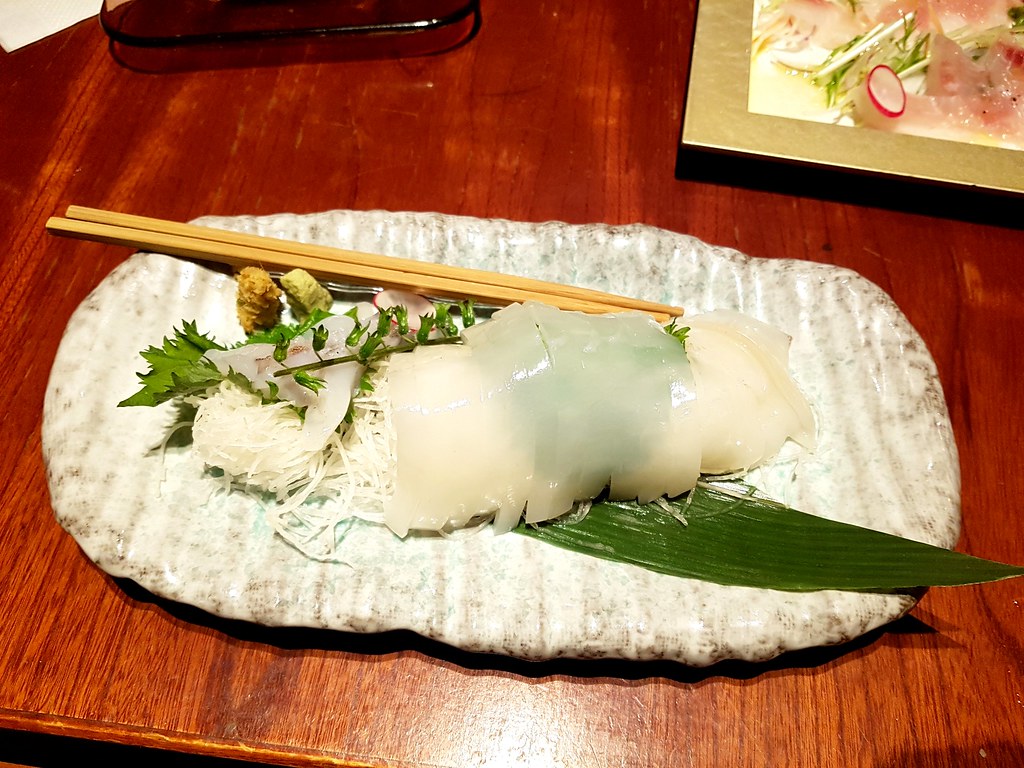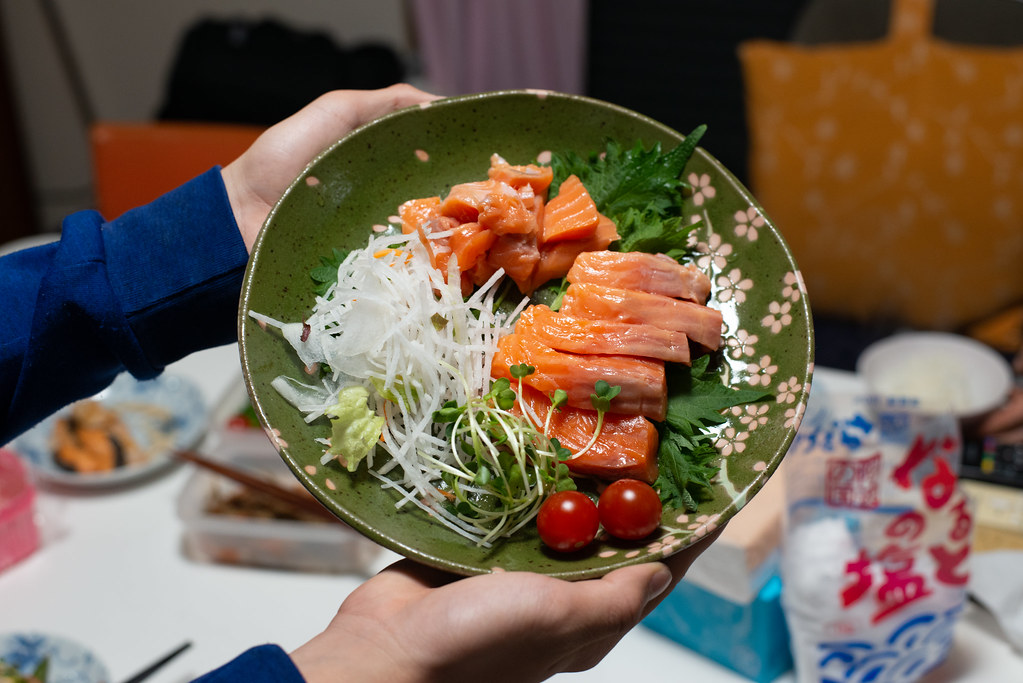Table of contents:
Raw, very thinly sliced fish or seafood is called sashimi in Japan. Tuna, salmon or mackerel are particularly popular for sashimi. I have eaten very good sashimi in many Japanese restaurants, but the photos for this article were all taken at a hotel restaurant on a trip to the Japanese Sea.


Sushi vs. Sashimi
Sushi and sashimi are often confused, or it is assumed that they are the same. However, both dishes are very different. Sushi is a way of preparing rice with vinegar, which is combined with various ingredients. It doesn't matter if the sushi contains fish, seafood, avocado or cucumbers. Sometimes you even find sushi with chicken or beef.
Sashimi, on the other hand, is very thinly sliced fish that is served without rice or other side dishes, making it quite healthy. The word “Sashimi” literally translates to “pierced body”, which is a hint at the fish.


What is fish in Sashimi quality?
Since Sashimi is eaten raw, the fish must be very fresh and of high quality to avoid stomach problems. Fish in Sashimi quality is therefore very fresh fish that can be eaten raw without any worries. However, you should generally only buy fish from dealers you trust. Just because a label says "Sashimi quality" does not mean that it can be eaten raw, because you don't know how it was stored during delivery, for example.
Which types of Sashimi are most popular?
Tuna, salmon, squid and mackerel are often used for Sashimi. But there are many other types of fish and seafood that are perfect for it. Here you will find an article about the most well-known and most commonly used fish species in Japanese cuisine.
Maguro (Tuna)
Tuna sashimi can be found in almost every restaurant. It is probably the most popular variant, which is available in different expensive versions. “Akami” is the standard variant, where the red, firm meat of the tuna is used. Slightly more expensive and higher quality is “Toro”. Here, the fatty belly meat of the tuna is used, which has a buttery taste. Toro is further divided into Chutoro and Otoro, with Otoro being slightly higher quality and more expensive.
Sake (Salmon)
The delicate, fatty flesh of the salmon is also very popular as sashimi and is called “Sake”.
Saba (Mackerel)
You should be especially careful with this sashimi, as the oily flesh spoils quite quickly. Saba tastes particularly good when combined with spring onions and grated ginger.
Ika (Squid)
Squid flesh can be quite tough, which is why this Sashimi is an exception and is sometimes served cooked. It is also a very popular sashimi variant and has a fresh and slightly sweet taste.
Avabi (Sea Snails)
Sashimi can be made not only from fish, but also from sea snails and mussels. But Avabi probably won't appeal to everyone. I've tried them and they're quite “hagotai”, meaning they're quite tough and a bit difficult to eat. They also don't have the same umami taste as salmon.
How to eat Sashimi?
Sashimi is dipped in small bowls filled with soy sauce using chopsticks and then eaten. As with sushi, grated ginger and wasabi are served with many variants. However, this is placed directly on the sashimi and not mixed into the soy sauce first.

Sashimi in Germany
Since very fresh fish has to be used, it is not so easy to get Sashimi in Germany, and if you do find it, it is unfortunately quite expensive. While northern Germany is also on the coast, fish is more likely to be pickled (like Matjes) than eaten raw. In Japan, however, it is normal to eat raw fish, and you can find sashimi in many restaurants.


Comments